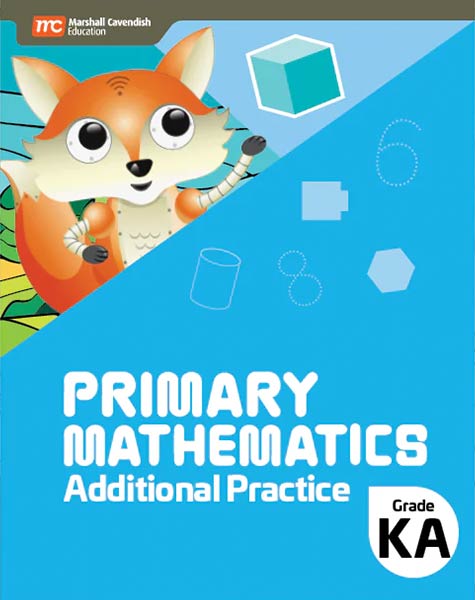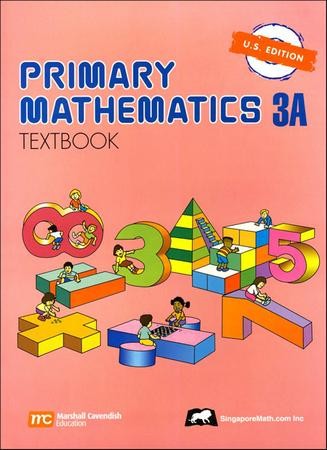Ways to inspire confidence in students experiencing struggles in primary math
Revealing the Finest Shortcuts for Solving Math Troubles Promptly
In the domain of maths, effectiveness is vital. Understanding shortcuts can change the means people approach troubles. From leveraging the distributive residential or commercial property to using quick multiplication techniques, these strategies boost both rate and precision. In addition, recognizing patterns streamlines complex estimations. As one explores these approaches, they may uncover unexpected insights that can alter their mathematical experience. What are one of the most reliable strategies that can be conveniently incorporated into everyday practice?
Grasping Psychological Math Techniques
Exactly how can one boost their estimation rate without depending on calculators? Understanding mental mathematics techniques uses a useful service. By using strategies such as breaking numbers into smaller, workable components, people can streamline complex calculations. When adding two-digit numbers, rounding each number to the closest 10 can make psychological enhancement easier prior to readjusting back to the original values.
Another effective method is to exercise reproduction tables completely, allowing fast recall of products (struggles in primary math). Furthermore, identifying patterns in numbers can promote quicker estimations, such as using the buildings of also and odd numbers. Routine practice through challenges and video games can even more fine-tune these abilities, making mental mathematics more instinctive
Ultimately, growing self-confidence in one's math abilities permits quicker decision-making and boosts total mathematical efficiency. By including these techniques, anyone can considerably improve their estimation rate.
Making Use Of the Distributive Home
The Distributive Building is a fundamental concept in maths that streamlines calculations by allowing reproduction across enhancement or reduction. It is important for students to comprehend its application through practical examples, which can improve their analytic skills. Additionally, acknowledging typical errors can additionally strengthen their understanding and protect against errors in future estimations.
Understanding the Distributive Residential Or Commercial Property
Mastering the distributive building can substantially simplify mathematical estimations. This basic home states that when multiplying a solitary term by a sum or distinction, one can distribute the multiplication across each term within the parentheses. In the expression a(b + c), one can reword it as ab + a/c. This approach not just streamlines estimations but likewise boosts understanding of how numbers engage (struggles in primary math). The distributive home is especially valuable in algebra, where it aids in streamlining expressions and resolving formulas. Additionally, it prepares for more complicated principles, such as factoring and polynomial operations. By comprehending the distributive residential or commercial property, pupils can develop a solid structure for dealing with a vast array of mathematical obstacles efficiently
Practical Instances Illustrated
Why is it vital to use the distributive home in practical circumstances? The distributive home allows people to simplify complex estimations, making problem-solving a lot more reliable. When determining the overall expense of several products, one can utilize the expression 5(2 + 3) to discover the overall cost of five products priced at $2 and $3. By distributing, the calculation becomes 5 × 2 + 5 × 3, yielding a quicker result of $25. An additional instance remains in algebra, where streamlining expressions like 3(x + 4) can be accomplished with distribution, resulting in 3x + 12. Such applications illustrate the performance of this property in various real-world scenarios, boosting both rate and accuracy in mathematical problem-solving.
Common Blunders to Stay Clear Of
Although the distributive residential or commercial property is a powerful device in maths, usual errors can result in incorrect results. One regular error takes place when trainees forget to distribute the coefficient per term within parentheses. In the expression 3(x + 4), stopping working to apply the residential or commercial property appropriately can lead to omitting the reproduction, yielding a wrong answer. An additional blunder includes defalcating the residential property by adding as opposed to increasing, especially when unfavorable signs are involved. Furthermore, pupils may disregard to streamline the outcome, which can rare errors made throughout distribution. Recognizing and avoiding these mistakes can enhance analytical effectiveness and accuracy when making use of the distributive home in numerous mathematical contexts.
Quick Multiplication Shortcuts
In the domain of quick multiplication shortcuts, strategies like multiplying by powers of 10 and the doubling and halving approach stand out. These methods can greatly streamline estimations, making them more available. Comprehending these faster ways can boost performance in mathematical analytic.
Multiplying by Powers of 10
When multiplying by powers of 10, the process ends up being incredibly simple, as the procedure mostly entails changing the decimal factor. As an example, multiplying a number by 10 requires moving the decimal one area to the right, while increasing by 100 demands a change of 2 locations. This simpleness encompasses bigger powers, where each added absolutely no shows an additional decimal change. For instance, multiplying 5.6 by 1,000 cause 5,600. This approach significantly boosts rate and precision, as individuals can quickly imagine the outcome without complicated estimations. Such effectiveness is especially helpful in mental mathematics or when time is restricted, allowing for rapid analytic in different mathematical contexts. Mastering this strategy is important for anyone aiming to boost their arithmetic skills.
Increasing and Halving Method
The Increasing and Halving Approach offers an effective approach for quick multiplication, specifically when handling also numbers. This method involves transforming a reproduction issue into a less complex form by either increasing one of the numbers and cutting in half the various other. To determine 16 × 25, one can cut in half 16 to get 8 and double 25 to get 50, resulting in 8 × 50, which equals 400 (struggles in primary math). This technique simplifies calculations, making them much more manageable. It is specifically beneficial in mental mathematics, enabling people to resolve problems swiftly and precisely. By leveraging this approach, trainees and specialists can boost their numerical dexterity, therefore improving total efficiency in mathematical tasks

Effective Department Approaches
Department typically presents difficulties for numerous students, utilizing reliable strategies can substantially simplify the process. One reliable method is using compatible numbers, which includes rounding the divisor and returns to easier values that are close to the initial numbers. This strategy makes mental computations a lot more workable. One more method is the evaluation technique, where learners can discover a harsh response before executing the specific department, offering a beneficial criteria for precision.
Moreover, the long division technique stays a staple for separating larger numbers. By breaking the process right into smaller, much more digestible actions, learners can preserve clarity. The duplicated subtraction approach can additionally be valuable, specifically for those who battle with more abstract principles. By systematically subtracting the divisor from the dividend, people can picture the procedure. Overall, these approaches can boost division skills, causing quicker and much more exact analytic abilities.
Rapid Enhancement and Reduction Techniques
Just how can students enhance their rate and precision furthermore and reduction? One reliable method is to use mental mathematics techniques, such as breaking numbers right into smaller, much more convenient components. For circumstances, when including 47 and 36, one can initially add 40 and 30 to get 70, after that include the staying 7 and 6 to reach 83. This method simplifies estimations and decreases mistakes.
Another strategy includes using the number line for aesthetic students, aiding them to see the partnerships in between numbers and enhance their comprehension. Additionally, experimenting devices like flashcards can reinforce fast recall of standard amounts and differences.
Learners can profit from acquainting themselves with benchmark numbers, such as rounding to the local 10, which enables for quicker estimates. By including these approaches right into their practice, students can significantly boost their speed and accuracy in standard arithmetic operations.
Leveraging Evaluation for Quick Calculations
Estimation works as an effective device for boosting calculation rate, matching mental mathematics methods effectively. By rounding numbers to their local entire values, individuals can streamline complex calculations, making it easier to reach an approximate result quickly. For example, when faced with a problem like 198 + 267, rounding to 200 + 270 yields a quick quote of 470, enabling the solver to analyze the precision of the last answer.
Additionally, evaluation is specifically helpful in scenarios entailing multiplication and division. By rounding variables to simpler numbers, one can swiftly assess approximate items or ratios. This method not only saves time yet also assists in recognizing prospective mistakes in estimations.
Identifying Patterns and Solutions
Patterns and formulas are essential tools her latest blog in maths that enable individuals to fix troubles a lot more efficiently. Identifying these patterns permits learners to recognize relationships between numbers and ideas, which can streamline complicated estimations. As an example, identifying the quadratic formula (ax ^ 2 + bx + c = 0) assists in fast solutions to numerous equations.
Moreover, patterns in turn, such as arithmetic or geometric progressions, help individuals anticipate future terms without comprehensive computations. Solutions, on the other hand, act as shortcuts, enabling faster analytical by encapsulating complex partnerships into workable expressions.
Frequently Asked Questions
Just How Can I Improve My Emphasis While Solving Math Problems Quickly?
To boost emphasis while addressing mathematics issues swiftly, one can get rid of diversions, set particular goals, practice mindfulness strategies, take normal breaks, and preserve a constant research study routine to boost focus and psychological clearness.
What Tools or Apps Aid with Quick Math Problem-Solving?
Numerous devices and apps, such as Photomath, Microsoft Mathematics Solver, and Desmos, boost fast math analytic. These sources provide step-by-step remedies, graphing abilities, and instant feedback, making them beneficial for specialists and trainees alike.
Are There Details Math Shortcuts for Standard Examinations?
Yes, specific mathematics shortcuts for standard examinations include strategies like evaluation, understanding number homes, using the procedure of removal, and mastering usual formulas. These techniques boost speed and precision, improving general examination Full Report performance.

Exactly how Do I Practice Math Shortcuts Successfully?
To exercise math faster ways effectively, individuals must regularly resolve varied troubles, make use of online resources, and participate in timed drills. Uniformity and representation on mistakes enhance understanding, eventually causing boosted rate and precision in calculations.
Can Shortcuts Be Applied to Complex Math Issues?
Shortcuts can undoubtedly be used to intricate mathematics troubles, although their effectiveness varies. Mastery of foundational concepts and strategic thinking enables individuals to simplify processes, making it easier to tackle intricate calculations efficiently.
By employing strategies such as breaking numbers right into smaller sized, convenient parts, individuals can simplify complex calculations. Additionally, recognizing patterns in numbers can facilitate much faster computations, such as using the residential or commercial properties of also and strange numbers. Evaluation offers as an effective tool for boosting computation rate, matching check this mental mathematics methods successfully. By rounding numbers to their closest whole worths, people can simplify intricate estimations, making it simpler to arrive at an approximate outcome swiftly. Acknowledging these patterns allows students to recognize connections in between principles and numbers, which can streamline complex estimations.